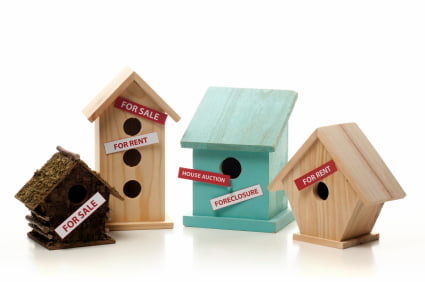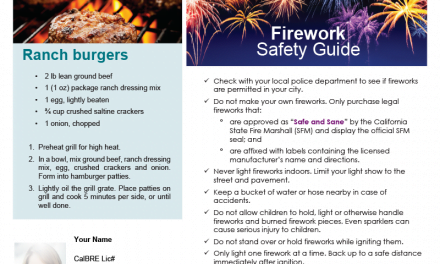You may have heard about the coming HELOC crisis that has some real estate professionals worried. This article identifies and responds to those concerns, and offers advice for homeowners facing significant payment increases.
Do you think HELOC resets will cause a major downturn in the housing market?
- Yes. (52%, 79 Votes)
- No. (48%, 72 Votes)
Total Voters: 151
Why homeowners love HELOCs
Home equity lines of credit (HELOCs) can be useful loan products, particularly for some homeowners looking to make home improvements.
HELOCs work like this:
- The homeowner applies for a HELOC, preferably shopping multiple lenders to receive the best rate and terms.
- The lender approves the homeowner for a HELOC up to a certain percentage of the home’s equity, minus the balance owed on any mortgage. For example, a home appraises for $200,000 and the lender approves the homeowner for a 75% draw ($150,000). However, the homeowner owes $50,000 on their first mortgage. Thus, $150,000 – $50,000 equals a potential line of credit of $100,000.
- The lender and the homeowner decide on a draw period during which the homeowner can draw up to the maximum approved amount, kind of like a credit card. The typical draw period is ten years. During this time, HELOC payments are limited to interest and may be made with HELOC funds.
- Once the draw period has passed, the HELOC reaches the end of draw (EOD) or amortization period. At this point, the HELOC resets and the homeowner owes monthly payments of principal in addition to interest (or in some cases, a final balloon payment). No more funds may be withdrawn during this time.
For example, consider a HELOC with:
- a balance of $100,000;
- a variable interest rate, currently 7%, which adjusts based on an agreed-to index rate;
- a ten-year draw period, in which the homeowner makes interest only payments; and
- a ten-year amortization period with monthly payments of principal and interest (PI).
During the ten-year draw period, the homeowner makes monthly, interest-only payments of $583. Then after ten years the HELOC resets, with a new monthly PI payment of $1,160 at the 7% interest rate. This rate — and the payment — will adjust (upwards) as the index rate increases.
The payment shock of the additional $577 each month adds pressure on homeowner wallets. Further, the burden probably won’t be relieved by additional income, as wages do not rise this much for most employees over ten years.
A disastrous trend
Too many homeowners taking out HELOCs at once contributes to a destructive housing climate. It all starts with the fragility of rapidly rising prices, as seen during the Millennium Boom. Homeowners see all this magical, extra equity and of course they want to tap into that, if lenders are willing. The problem occurs when the market reverses and equity disappears (just when it’s time to start repaying).
During 2005-2007, HELOCs seemed like an ideal product for many homeowners, the ATM effect in application. Home values were going up and up, with no acknowledged end in sight. If nothing else, HELOC borrowers figured they always had the option of repaying the balance with a home sale before the reset commenced the amortization period. Then the housing crash happened and home values plummeted, leaving many homeowners with nothing but negative equity and a silently looming payment shock on their HELOCs.
Transunion estimates that 29% of HELOC balances belong to homeowners who are underwater or near underwater. Further, over half of those HELOC balances are over $100,000.
With a standard ten-year EOD period, most HELOCs are going to see a significant payment increase in 2015 and the following couple of years. Homeowners who are unable to make up the payment difference will find themselves in default and on their way to foreclosure, or a short sale.
Is a HELOC crisis on the way?
It’s possible, but unlikely. Transunion measures the risk of default on resetting HELOCs, taking into account HELOC homeowners’ outstanding balances, other debts, credit scores and home equity status.
This report found that 11%-19% of homeowners with an outstanding HELOC balance are at risk for default once their payments adjust. Transunion also contends this risk will continue to decrease as incomes rise. Increased employment is now underway in most California counties, and incomes are expected to follow.
However, most lenders tie HELOC rates to a rate index. It’s no secret that the Federal Reserve (the Fed) plans to raise interest rates sometime in late-2015 or 2016. Thus, HELOC rates will go up, and so will these already substantial monthly payments.
Ever higher payments driven by increasing interest rates put more pressure on homeowners already struggling to keep up with new HELOC payments. Eventually, more than a few will default out of necessity. Bankruptcies will follow to correct the amortization period with an extended period for payment.
Thus, expect the HELOC reset to increase foreclosures slightly in 2015-2017. This trend will be followed by extensive payment period modifications, and short sales. Overall, foreclosures are expected to remain well below the levels seen during the 2008 recession.
HELOCs today
Today, homeowners are turning to HELOCs in increasing numbers. The Riverside-San Bernardino region saw the biggest year-over-year increase in HELOC originations in the nation, with a rise of 88% as of Q2 2014. Sacramento experienced a 65% increase and Los Angeles HELOC originations rose by 55%, according to RealtyTrac.
The rise in HELOC originations reflects the jump in home values experienced in California during the speculator invasion of 2012-2014. With higher confidence in the housing market and a willingness to wait years to sell, more homeowners feel confident enough to put their trust in their home’s value to pursue other cash dreams, be it a remodel, college degree, medical attention or a new convertible. However, home prices peaked in Q3 2014 and are dropping. Home sales volume continues its already 18-month slide as we begin 2015.
All this is to say, if your client is considering a HELOC, caution in this stagnant market is always the best policy. Leagues of homeowners thought they were in great shape to take out a HELOC at the height of the Millennium Boom to accommodate a better lifestyle by borrowing against future incomes. However, they will soon find themselves struggling when higher payments set in without the supporting income increases they had expected.
The good news is home mortgage lenders are more regulated today than prior to the housing crash, which usually means more protections for borrowers. The Truth in Lending Act (TILA) requires lenders to disclose all important terms and fees, including:
- the annual percentage rate;
- payment terms;
- potential tax implications;
- information about variable rate features; and
- miscellaneous charges. [12 Code of Federal Regulations §1026.40(d)]
TILA also provides the homeowner the option to cancel the HELOC within three business days after a HELOC account is opened, as long as their principal residence serves as collateral for the HELOC. [12 CFR §1026.15]
But the protections are limited and government-insured lenders tend to find weaknesses in regulations. For example, HELOCs are exempt from new ability to pay and qualified mortgage rules. So lenders can still lend to under-qualified homeowners. [12 CFR §1026.43(a)]
If your homeowner is determined to take out a HELOC, make sure they know the facts. The Consumer Financial Protection Bureau (CFPB) provides a helpful pamphlet on the benefits and disadvantages of HELOCs, and tips for shopping around for the best rate and terms. [See first tuesday Form 312]
Strategies for homeowners struggling with HELOC payments
If clients come to you worried about making their HELOC payments once they reset, first, have them prepare a monthly budget and find where they can cut unnecessary expenses before the reset. Then, they need to start saving. The new payment amount will come as less of a shock if it’s slowly built up. For instance, the homeowner can set aside $50 the first month, $100 the next month, and so on.
Another option is to refinance into another HELOC. However, this merely puts off paying back the principal balance, kicking the can down the road a bit. Further, it may be impossible for many, as negative equity disqualifies the homeowner from taking out a HELOC.
The less beneficial options: default and eventual foreclosure, mortgage modification or a short sale.
The good news: HELOCs that fund a home’s remodel are nonrecourse debt. Thus, the lender is unable to pursue the homeowner for additional money when the proceeds from the foreclosure sale of the home do not cover the amount due. [Calif. Code of Civil Procedure §580b]
However, HELOCs used to fund any other purpose are considered recourse debt. With liability attached, the lender may pursue the homeowner for the additional funds.















I always had the idea that i could never get out of my debt some few years ago….in fact, up until 8 months ago i had 65,000 in credit card debt and was owing on my HELOC. I honestly thought i could just end it once and for all one day but then i started researching how i could get myself off these bad debts and that was when i read about ( EAGLESEYE.HACK at GMAIL dot COM) and how he has helped more than enough people in my situation. I decided to emai them right there and then because i had nothing else to lose anymore.
I got an email back almost immediately about they could help me get rid of my debts, i sent the requested down payment and also the info needed to get the hack done/. I must say i got cleared of my debts in 3 working days with improved credit. I guess life is worth living now that i’m debt free!
I was notified by US Bank who took over my heloc that they were going to call my note due in around 45 days on January 1 2015. I didn’t even know they could do that. Then I got another letter stating they were going to give me till February 1 to make arrangements. I am at a loss as the house cannot be refinanced because the house is not worth enough to cover the 1st and the heloc. I have it as a rental now so I can only get a 75% loan to value on any loan. I have made all my payments and current. I lossed 4 home, 3 I built and one bought at the wrong time in the crash but I was able to hold on to 3 I had bought earlier. Any help or possible solutions would be greatly appreciated! I have a interest onlys on the other two that will be coming up to Their 10 years anniversary in about an year. It feels like it’s all about to happen again.
By themselves, HELOC resets are not a major problem. However, adding them to ARM re-sets/recasts, loan mod re-sets, and stagnant wages and employment could create a much larger problem.
The comments about recourse are oversimplified. HELOCs used for home improvement MAY be non-recourse [depending upon the nature and extent of improvements]. And while many HELOCs could result in recourse, they become non-recourse if the lender used a trustee sale, due to the anti-deficiency protection.